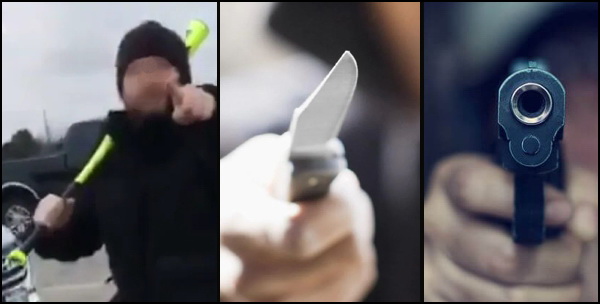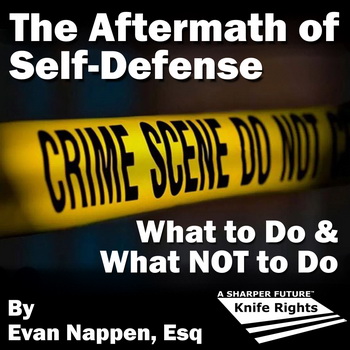
In these disturbing times, the issue of self-defense and the aftermath are increasingly areas of concern for many who never previously gave it much thought. Politics, irrespective of facts or longstanding law, is increasingly affecting what happens in the aftermath, what happens to the person defending their life or that of loved ones. That is why Knife Rights teamed up with U.S. LawShield* which offers legal defense protection for those who have a justified self-defense or bogus weapons charge incident regardless of the legal weapon used.
The information below is generic, covering use of any weapon, not just a knife. We know many of our members carry a firearm for self-defense or have one at home with any knife being considered a tool which might serve as back-up in a self-defense situation. Others have no choice, or choose to, only carry a knife. And, as long as we are on that subject, a reminder to NEVER claim to carry a knife for self defense when dealing with law enforcement.
Just as this article is generic in regards to what weapon might be used in self-defense, it is also generic in the sense that no two self-defense scenarios are exactly the same or may not fit precisely into the provided continuity of actions suggested. Some develop over time, some are over in seconds, some are straightforward, others more complicated. The steps and recommendations below provide guidance on best practices, but you will likely have to adapt them to your particular circumstances. The explanations provided should help you accomplish this, but remember also that this is not legal advice*.
We suggest you practice or role-play the calls to 9-1-1 and interaction with law enforcement until you have them memorized. With adrenaline flooding through your body, or when in shock afterwards, you may not recall these unless they are burned into your memory.
This article below has been authored by Evan F. Nappen, Attorney at Law (www.evannappen.com), Knife Rights’ Criminal Law Advisor, an experienced and accomplished criminal defense attorney, author of numerous articles and books on self-defense, knife law, and Second Amendment law, and one of U.S. LawShield’s Independent Program Attorneys.
The Aftermath of Self-Defense – What to Do & What NOT to Do
We have previously addressed the issue of what to do if you are stopped or arrested for carrying a knife, but what to do after a violent encounter is another matter entirely. While the SAC mnemonic is still good guidance (S – Remain SILENT – “I assert my right to remain silent;” A – ASK for your Attorney – “I want my/an attorney;” C – Do NOT CONSENT to any search. Do not make or sign any statements without your attorney’s approval), there’s more involved if there’s blood spilled or someone has been injured.
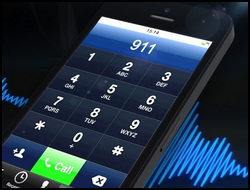
- “I/we are in fear of physical harm and are in imminent danger from an armed person/group or violent person/group (as appropriate) and are unable to retreat safely.”
- Describe the threat (clothing, height, location, direction of travel and the weapon(s) (gun, club, knife, etc) if able. Do NOT describe the threat with details such as their race, their politics or affiliation, or any similar descriptive terms. That might come back to haunt you.
- Give your name and location, describe yourself and any companions (clothing, height, etc.)
- DON’T SAY ANYTHING MORE! HANG UP! DO NOT ANSWER THE PHONE when 9-1-1 calls back!
NOTE: The most important thing about calling 9-1-1 is to HANG UP IMMEDIATELY AFTER you have provided the essential information required in order for law enforcement and medical to respond. Do not answer when they call back!
Remember, what you say can and will be used against you. The call is recorded and will be made available to the news media that will likely sensationalize anything you say. Your adrenaline is high, you may well be in shock and you will say things you shouldn’t that seemed innocent enough at the time, but will be turned against you. HANG UP!
If you are at your residence or place of business and there is a way to protect yourself without stepping over the threshold of the entrance, avoid doing so. An investment in video surveillance for your residence or business is strongly recommended.
However, if you are accosted on the street, a WARNING about taking video. If there’s an opportunity to video the scene, there’s also likely opportunity to leave the scene which is your best option by far. Too often “observers” have suddenly found themselves “participants” which rarely ends well. One exception is if you are in a vehicle and unexpectedly surrounded by a mob. Dean Weingarten has some advice for that specific difficult situation in his article, “Vehicle ‘Protest’ Encounters: Politics, Legal Jeopardy, Defense.”
Retreating to safety if you can to avoid a violent confrontation will always be your best outcome. This is so even where Castle Doctrine or Stand Your Ground statutes are in effect. If able, disengage immediately and as quickly as possible once the threat is identified.
NOTE: The most common result of display of a weapon is deterrence, where the presence of a weapon in the hand of a potential victim stops a crime before anyone is hurt, before any blood is spilled. If that occurs, you should IMMEDIATELY CALL 911 and make a report, whether it is the first call to 9-1-1 or a follow-up. Again, keep the details to the minimum as noted above, but be clear that you are the victim and were threatened or an assault was attempted. The one exception is to provide the race of the assailant, if you can CLEARLY identify that. (e.g. White, 5’6″, normal build, blonde mustache, black top and knit cap, blue jeans, bright green baseball bat, ran away north on James Ave. when I showed my knife.) Then wait for law enforcement to show up, assuming they say they are responding.
In numerous cases, it has been this call to 911 by the victim which is used as critical evidence to stop prosecution or a civil lawsuit. Bad guys know the one who calls 9-1-1 first gains the advantage. Make sure that is you.
Before using deadly force you must be in fear of you or your companion(s) being gravely injured or killed and that fear must be “reasonable.” In some jurisdictions deadly force is allowed to protect your property from arson, but generally you cannot use deadly force to protect against theft or vandalism of your property. In some jurisdictions you cannot even use the threat of deadly force by “brandishing” a weapon to protect only property. That may not sound fair or reasonable to you, but the law is often not fair or reasonable. You should know the law where you live and travel and be careful to abide by it.
An advantage most legal defense providers like U.S. LawShield provide is that they typically provide an authoritative guide to your state’s self-defense and use of deadly force laws.
2. If retreat is not an option and it comes down to using deadly force to stop the imminent threat of grave injury or death, your first priority in the immediate aftermath is to ensure that the threat has been stopped or otherwise controlled. Your safety is paramount.
Once the threat is stopped, immediately stop the use of deadly force. The use of deadly force is no longer appropriate or legally defensible once the threat is disabled, disarmed, retreats or otherwise is no longer a threat.
3. Once you determine that you are safe, DO NOT DISTURB THE SCENE. If a pistol was used from a holster, re-holster it if you can do so safely or set it down in a safe location. If a long gun, knife or some other object was used, set it down in a safe location, DO NOT clean any blood off of the weapon and DO NOT RETAIN HOLD OF IT. (You do not want to be holding a weapon in your hands when law enforcement or medical shows up). If is safe for you to do so, and you have the necessary skills, render ONLY any immediately necessary medical care required to prevent loss of life of the assailant, yourself or a bystander, then IMMEDIATELY CALL 9-1-1. Call 9-1-1 without delay as soon as you can safely do so. DO NOT DELAY!
After the 9-1-1 operator asks “What is your emergency?” provide ONLY the following information. Speak slowly and clearly:
- Say, “send law enforcement and an ambulance (or however many ambulances might be appropriate) to (your location).” Provide the address if known, or cross streets, or the name of a store, building or company at or near your location. If you cannot provide a location, they will figure it out from your cell phone’s GPS location (if a smart phone) or via cell towers, which isn’t as accurate or quick. (In most cases, even if GPS is turned off in your settings, smart phones can provide 911 a location).
- Give them your name, “My name is….”
- Say, “I have been the victim of a crime/an assault” (as appropriate).
- If a threat still exists, describe as detailed above for initial 9-1-1 threat call.
- If you are holding a weapon on the assailant, do tell 9-1-1 so responding law enforcement is aware. NOTE that medical response is unlikely to provide care until law enforcement arrives as long as a weapon is being held at the scene by anyone.
- DON’T SAY ANYTHING MORE! HANG UP! DO NOT ANSWER THE PHONE when 9-1-1 calls back!
4. If you have a criminal defense attorney or are a member of a legal defense provider like U.S. LawShield, call them now.
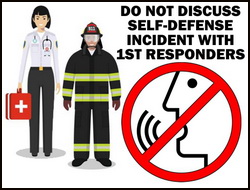
Depending upon the extent of any injuries you may have, you may be rushed to the hospital even before law enforcement arrives.
6. When law enforcement shows up, SILENTLY COMPLY with any commands IMMEDIATELY!
The officer will have no idea what happened or who is the criminal. In most situations like this you will be treated as a potential threat. Guns may be drawn and pointed at you. Just silently obey any commands in a completely non-threatening manner. Be aware that the officer will want to take control of the weapon used and any other weapons, or potential weapons like a pocket knife, you may have on you. Do not object, just silently comply. ALWAYS be RESPECTFUL, POLITE and COOPERATIVE. DO NOT RESIST under any circumstances!
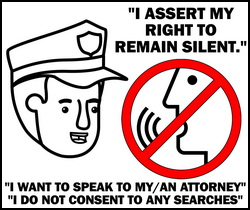
- I/we have been the victim of a crime/an assault (as appropriate).
- Follow the SAC steps. Tell the officer:
-
- S. “I assert my right to remain silent”
- A. “I want to speak to my/an attorney”
- C. “I Do NOT CONSENT to any searches”
8. REMAIN SILENT, do not make any statement, apology, comment, answer any questions, anything at all beyond the above, nor sign anything, until you have spoken to an/your attorney. The officer(s) will continue to ask you questions. They may badger you, insult you, try to be your best friend or try to intimidate you. Every criminal they run up against in a similar situation tells them it is self-defense. They will be understandably skeptical. Odds are they have little or no experience with an actual justifiable self-defense case.
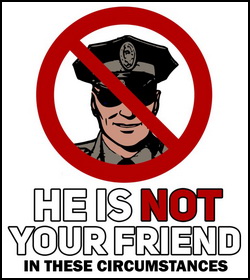
They are legally allowed to lie to you! Don’t let them take advantage of you. They ARE NOT your friend. They ARE NOT on your side. YOU MUST say over and over again, “I assert my right to remain silent and I want to speak to my/an attorney.” Keep repeating that until they stop. If they don’t stop, you don’t stop. DO NOT SAY ANYTHING MORE!
(Knife Rights NOTE: While we generally support law enforcement, in this instance your duty is to protect yourself so that a miscarriage of justice does not occur, regardless of why that might happen. In this instance you must treat law enforcement as an adversary, albeit with complete respect.)

If you have already spoken to your attorney or one provided by your legal defense provider, the attorney will likely help guide you through this process and may ask you to hand your phone to the officer so as to intercede with the officer(s) on your behalf.
If you are feeling unwell as a result of the violence in which you were just involved, and most people will be in shock and traumatized, at a minimum, insist that you be taken to a hospital, “I don’t feel well, I need to go to the hospital.” If you have particular symptoms such as your heart racing, chest pains or breathing issues, you should mention that. Be insistent about this as well as your right to remain silent and to talk to an/your attorney.
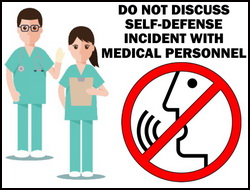
9. If you are asked to accompany the officer or if you are arrested, silently comply, but do not make any statements or speak except to repeat, “I assert my right to remain silent and I want to speak to my/an attorney.” Remain respectful, polite and cooperative. Do NOT resist, do NOT complain, do NOT make threats, even if you are not being treated respectfully or gently. It is your attorney’s job to deal with that later, don’t make his job more difficult.
10. DO NOT make jokes, do not make light of what happened, this is a very serious situation and you should treat it as such. REMAIN SILENT!
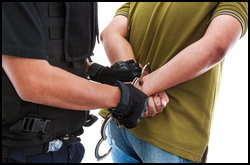
NOTE: If you make a call from a jail phone, be advised that virtually all are recorded and there will be a warning to that effect next to the phone (which may not be obvious). Attorney-client privilege does not apply when you are previously warned the call may be monitored/recorded.
A note about your interaction with companions or others who are witnesses: You should avoid talking with witnesses about the violent confrontation. Any attempt to tell them what to say or to not speak to law enforcement may be treated as witness tampering and will reflect badly on you should there be a trial. Anything you say to them may be revealed when being questioned or under oath.
Communications with a spouse are generally privileged, but testimony about what was observed may not be, nor would the testimony of any other witness, including the assailant, of what was communicated.
Having said that, the most likely companions would be your family, close friends or close associates. You should ensure that they ALL review this article and be educated ahead of time about SAC at: www.KnifeRights.org/if-arrested). This is valuable and essential knowledge everyone should know in any case. They should know that ANY TIME they are approached by law enforcement for ANY REASON (other than a traffic stop) that they should decline to say anything without consulting with their attorney, “I cannot say anything without speaking to an/my attorney.”
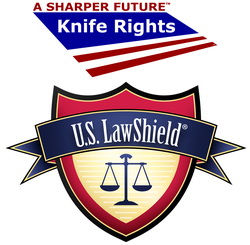
Imagine finding yourself in a situation like this where you are telling an officer, “I want to speak to an attorney,” with no clue even how to find that attorney, hopefully experienced and competent, to whom you desperately need to speak? For a modest monthly sum, U.S. Law Shield solves that problem and ensures you don’t have to risk bankruptcy to be represented by an experienced criminal defense attorney who is immediately available 24/7/365 in such an emergency.
If you were forced to protect yourself or your family from an assault, break-in or other illegal act, could you afford to defend yourself in court against inappropriate, perhaps even politically motivated criminal charges or a civil lawsuit? Viewing the violence playing out on the news every day, that’s a question more and more folks are asking themselves. With some jurisdictions viewing your perfectly legal EDC knife as a weapon, not a tool, what would you do if arrested on a weapons charge? These are serious, real-world concerns that Knife Rights can now address through its relationship with U.S. LawShield.**
Get 10% off monthly memberships or 14 months for a 12-month annual membership (a 15% discount), PLUS waived sign-up fee, when you sign up for U.S. LawShield. Go to: www.KnifeRights.org/USLawShield (Promo Code: krlawshield2020) in order to receive your discount.
After the fact is too late. Protect yourself and your family today! www.KnifeRights.org/USLawShield
*Knife Rights cannot provide legal advice and the information herein is not legal advice and should not be relied upon as legal advice. Consult a competent attorney for legal advice.
** *Knife Rights is not an insurance provider, is not a licensed insurance agent, and nothing herein should be construed as such. All memberships are sold by and through U.S. LawShield.


